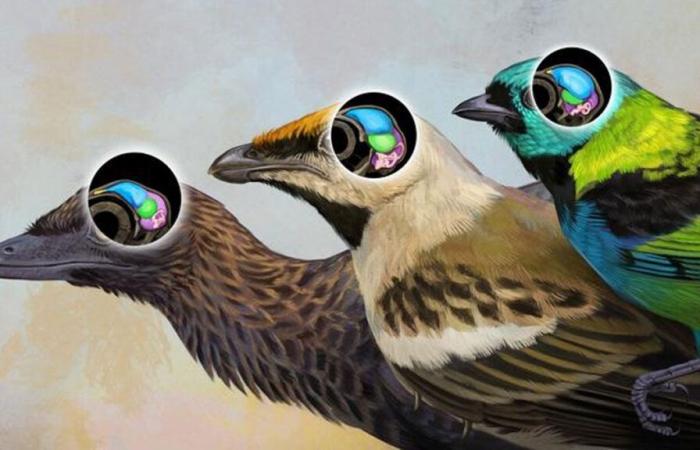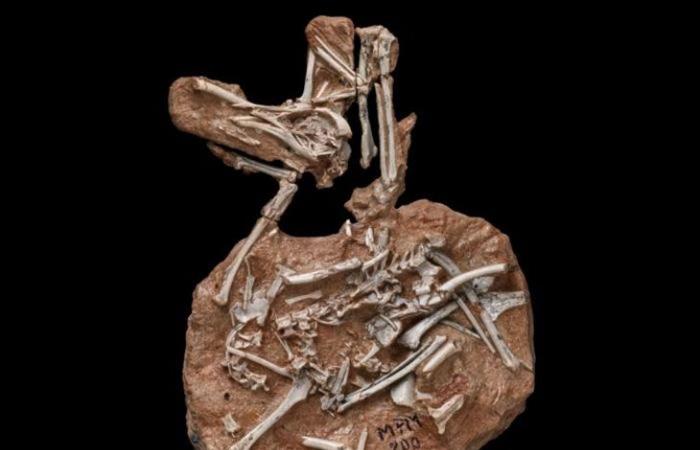Analysis of a remarkably complete avian dinosaur fossil has given scientists an unprecedented insight into the brain structure of these creatures during the late Cretaceous.
Navaorni’s hestia
80 million years old, this fossil exquisite Navaorni’s hestia was presented as a “ missing link » enter Archeopteryx, dinosaur Jurassic feathered species widely considered by paleontologists as the ancestor of birds modern, and these. Such an age also implies that the species, new to science, rubbed shoulders with some of the most iconic dinosaurs, such as tyrannosaurs.
If the skeleton, superficially resembling that of a starling, was discovered in 2016 near the Brazilian town of Presidente Prudente, it was not until 2022 that it was studied closely, and a detailed 3D model of its skull was produced. created.
« High-resolution CT scan is akin to true digital dissection “, explains Daniel Field, researcher at the University of Cambridge and lead author of the new study, published in the journal Nature. « Once each component of the cranial structure has been isolated, they must be reassembled to obtain a complete and undistorted three-dimensional model.. »
New lighting
This careful reconstruction indicates structures involved in advanced cognition and spatial orientation that are significantly more developed than in Archeopteryxbut still far from those of current species.
« The enlarged brains of modern birds allow them to perform a wide range of complex behaviors », souligne Field. « But until now, it has been difficult to understand its evolution, due to the lack of ancient fossilized specimens that are sufficiently complete and preserved.. »
Overall, the researcher and his colleagues believe that Navaorni’s hestia bridges a gap of about 70 million years, helping to shed much light on the timeline of the development of birds’ specialized brain features.
At the end of October, paleontologists unearthed the fossils of the oldest birds of prey in the world, 68 million years old.







